C-band frequencies (3.4-4.2 GHz) are vital to operations of satellite services, particularly intropical and subtropical regions, where other frequencies are bedevilled by “rain fade”.
Societies in the Asia-Pacific rely on C-band to support business communications, telemedicine, distance education, disaster recovery – and of course getting broadcast content to the region’s 575 million Pay TV homes.
But other groups have their eye on the C-band frequencies. Several Administrations have already assigned portions of that band for wireless broadband systems – with disastrous results. Now the ITU is being asked to open the C-band for use by 4G and future 5G (IMT) wireless systems.
Casbaa and its members are fighting back against this invasion. Click on the documents below to get educated and, if you are a Pay TV operator, ask your engineering people if you rely on the C-band to get the programming you and your customers need. Then contact your national telecoms regulator, and let them know that C-band is vital for your business and your links with the rest of the world.
Fight the Invasion! If you’re a user of satellite C-band services, contact your regulator.
If you’d like a clear, one-page representation of the issues involved, you can download one here.
Who Uses C-Band? Tens of Millions of C-band Dishes serve hundreds of millions of asian households and businesses.
One of the most important uses is distributing broadcast programming to millions of TV reception dishes (TVROs). For a broad overview of this aspect of C- band usage across Asia click here.
Individual Market Summaries | Publications | Presentations | Papers | Press Articles
| Individual Market Summaries | Last Updated |
| Australia | May 3, 2015 |
| Singapore | May 3, 2015 |
| Nepal | Oct 2, 2013 |
| Fiji | May 3, 2015 |
| Afghanistan | Oct 2, 2013 |
| Philippines | May 3, 2015 |
| Thailand | May 3, 2015 |
| Bangladesh | May 3, 2015 |
| Vietnam | May 3, 2015 |
| Pakistan | May 3, 2015 |
| New Zealand | May 3, 2015 |
| Malaysia | May 3, 2015 |
| Korea | May 3, 2015 |
| Japan | May 3, 2015 |
| Iran | May 3, 2015 |
| Indonesia | May 3, 2015 |
| India | May 3, 2015 |
| China | May 3, 2015 |
| Taiwan | Mar 3, 2012 |
Should you have additional information, kindly send an email to john@cassbaa.com.
Around 100 million C-band TV Dishes in Use
| CASBAA examined available data on C-band TV dishes (TVROs) around the world. The numbers of such dishes in use are regularly wildly underestimated (because most are not required to be registered with governments), but our estimates show upwards of 100 million such dishes in active use. Read here |
Hundreds of Millions Rely on C-Band: Euroconsult’s Authoritative Assessment of Usage
| CASBAA commissioned a detailed study by Paris-based technology consultancy Euroconsult, to examine the situation on-the-ground in three markets representative of the diverse economies of southern Asia and the Pacific. The study found that – in addition to the hundreds of millions of consumers who rely on C-band television streams – the banking and finance, energy production, and government sectors were particularly dependent on satellite networks using C-band spectrum, which is prized for its reliability and scope of coverage. Read here |
Press Release – New Study Finds Benefits of Transferring C-band Spectrum from Satellite to Terrestrial Wireless Grossly Exaggerated
| Geneva, 5 November 2015 – As national administrations from across the world prepare to make critical decisions this month regarding global communications spectrum allocations, a newly-released report shows that studies suggesting enormous benefits of satellite spectrum for terrestrial wireless contain major flaws in logic, calculation and methodology.The findings of a study done by economic consultants VVA show that in highlighting the benefits of the so-called “C-band” for mobile terrestrial, cost-benefit studies done for the mobile terrestrial sector completely ignore major negative impacts on satellite communications’ user groups throughout the world. The findings come just before the question of the C-band will be considered during the International Telecommunication Union (ITU) World Radiocommunication Conference (WRC), being held in Geneva through November 2015.
Terrestrial mobile stakeholders commissioned studies from Frontier Economics and Plum to highlight the positive economic impact of the C-band for their sector. A closer look at their methodology by VVA shows that these studies ignore the cost of disruption or loss of services for sectors that rely on them today, noting that for some applications, mobile terrestrial cannot provide any replacement. Furthermore they use incomparable benchmarks; follow an incorrect approach to calculations; overlook alternative bands and technologies; rely on unproven technical concepts and use a multiplier effect of their errors in order to exaggerate the economic benefits. Monica Pesce, Managing Director of VVA commented, “Any economic analysis must take full and proper consideration of the costs of and benefits for existing players and users and new players and users. The studies we have looked at are selective in their approach, drawing on the most favourable elements necessary to conclude a significant, positive economic benefit for the terrestrial mobile sector, even if in reality, they may be far lower when properly balanced against satellite user interests.” In a joint statement, Aarti Holla and David Hartshorn, Secretary Generals of ESOA and GVF, non-profit associations representing the international satellite communications sector noted that “Millions of people throughout the world depend on satellite services delivered via the C-band, and it is imperative that the decisions to be made at WRC are based on the most accurate information currently available. The C-band is used to support a wide range of services, including emergency communications, peacekeeping, distance learning, live broadcasting, tele-medicine, e-government and other vital applications. Taking away and re-allocating the spectrum required to support those services based on inaccurate terrestrial wireless analyses would have a severe impact on consumers, enterprises and governments throughout the world.” __________________________________________________________________________________________ Background – Informing the Global Debate – VVA Study Findings Research conducted by VVA, a Brussels-based consultancy, which discovered that claims made recently by Plum and Frontier Economics are based on key methodological flaws, including: • Economic benefits are overestimated by using auctions on 2.6 GHz – a band with different characteristics – as a benchmark for spectrum value rather 3.5 GHz auction values; • Country specific factors, obtained by using an inaccurate calculation approach, further inflate spectrum value for many countries used as case studies. Wrong quantifications are then extrapolated for considered regions. These two errors generate a multiplier effect that leads to further overestimating calculated benefits; • Efficiency gains deriving from the usage of alternative methods to provide capacity are expressed qualitatively but are not quantified. Alternative options to C-band for spectrum usage are ignored. For More Information About This Issue www.satellite-spectrum-initiative.com |
C-band at the ITU – Challenges at WRC 15
 |
The broadcasting and satellite industries face major challenges at next year’s WRC 15 conference, with mobile advocates pushing to lower their costs with “harmonized” global spectrum by taking the C-band frequency resource essential to television, banking, and industrial support services used by hundreds of millions of people in Asia. In this new paper, spectrum expert Jorn Christensen analyzes the likely nature of the challenges, and the specific WRC agenda items where attacks on satellite spectrum will emerge. He says users and providers of satellite services have to continue to make clear to policymakers that there will be huge costs and disruptions from interference if mobile services are authorized in C-band.Read here |
CASBAA Blasts Demand Model
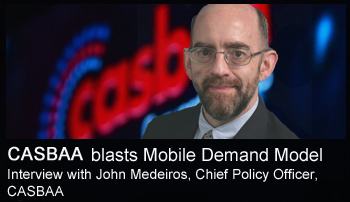 |
CASBAA’s Chief Policy Officer John Medeiros discusses why C-band satellite communication is so important for countries in Asia, and why the mobile industry’s demand estimates are way off base, in an interview with Kevin French, publisher of the Talk Satellite business magazine.Listen to the interview here |
Ofcom backs away from spectrum demand model
 |
The UK’s communication regulator, Ofcom, appears to be backing away from reliance on a flawed ITU wireless demand model to guesstimate future demand for mobile broadband spectrum. Spectrum experts and the European Satellite Operators Association (ESOA) have been pushing for a re-examination of the model, which appears to wildly overstate the likely future growth in mobile spectrum demand. (One wag commented that the ITU model assumes a mobile density equivalent to the entire population of the USA simultaneously moving into the city of Paris – a prospect that leaves Parisians gasping!)An article in specialist website Policytracker.com describes the development; it includes the view of LS Telecom expert Tim Farrar that “the consensus that the ITU-R… model is a valid basis for forecasting future spectrum demands is unraveling.” Read here. |
| An Intelsat official wrote an incisive blog post, noting the complications faced by regulators seeking to allocate frequencies, when the available demand models hugely overstate the likely demand for mobile bandwidth. This fits a historical pattern, with mobile interests consistently overestimating spectrum demand, but will have devastating effects in Asia, if governments yank spectrum from their TV consumers to sell it to mobile interests that don’t really need it. Read the blog post here. |
Challenge to Satellite Frequencies Continues
 |
CASBAA Spectrum Consultant Jorn Christensen writes that the challenge to satellite industry use of the C-band radio spectrum will continue, through the next three years of ITU consideration of how to find new frequencies for mobile broadband systems. The issue will be on center stage at WRC 2015, as it was in the WRC in 2007. This paper presents an item-by-item survey of the WRC agenda points that will challenge satellite frequencies, and proposes defensive actions by satellite and broadcasting interests, beginning now. Download here. |
 |
CASBAA published an update report entitled “What’s Up with WiMax?” for member companies on the prospects for actual and potential interference between broadband wireless systems and Asian satellite transmission systems in the C-band. The report notes that spectrum pressures for broadband will be highest in large countries with underserved rural areas, including Australia, China and India. Download the update paper here. |
In Search of coexistence: WiMAX and Satellite Services in Asia
 |
CASBAA released “In search of coexistence: WiMAX and Satellite Services in Asia” in 2009 June reviewing some of the latest developments in the deployment of BWA in the 3.5 GHz band and explores ways in which a government can provide BWA without allocating spectrum in the 3.5 GHz band. Download here. |
Transmission Troubles – A threat to Satellite TV Services in Asia
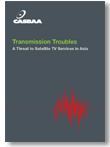 |
CASBAA released a new report highlighting the threat to television services posed by the deployment of Broadband Wireless Access services (such as WiMax) in the radio frequency band used for the wholesale distribution of satellite television signals in Asia.The “Transmission Troubles” report provides the first region-wide survey of “real world” experiences of licensing conflicts over wireless spectrum normally used by satellite operators. Download here. |
| Presentations | |
  |
“Presented at the ITU International Satellite Symposium in Bangkok, in September 2014.”Download Satellite Broadband Spectrum: Connectivity Needs & WRC Agenda Item 1.1
Download Safeguarding C-band Source: GVF, SES, Sept 26, 2014 |
 |
“Presented at the CASBAA Satellite Industry Forum 2014 – Singapore, June 16, 2014.”Download Assessment of C-Band Usage in Asian Countries
Source: Euroconsult, Jun 16, 2014 |
 |
“Presented at the ITU Regional Radiocommunication Seminar 2014 for Asia Region Countries (RRS-14-Asia) – Ha Noi, Viet Nam, May 26-30, 2014.”Download The Importance of C-band and the Threat of IMT in this Band
Source: SES, Jun 12, 2014 |
  |
“Presented at the Joint Workshop on Policy and Regulation of the Pacific Islands Telecommunication Association (PITA) and the Pacific ICT Regulatory Resource Center, April 11 2014, Port Vila, Vanuatu”Download The Future of C Band in Asia Pacific
Download C Band Developments & International Processes Source: CASBAA, Apr 24, 2014 |
 |
“Presented at the Satellite 2014 Conference in Washington, D.C., March 2014″Download presentation
Source: European Satellite Operators Association, Mar 20, 2014 |
 |
“Presented to the Ministry of Industry and Information Technology, in Beijing, on November 1, 2013″Download presentation
Source: AsiaSat, Feb 17, 2014 |
 |
Given at the Australian Communications and Media Authority RadComm 13 Symposium, in Sydney, on 2 October 2013.Download presentation
Source: NewSat, Jan 10, 2014 |
 |
Given at the annual Convention of the Philippine Cable Television AssociationDownload presentation
in Manila on March 21, 2013. |
 |
Given by representatives of CASBAA and Asiasat at the IEEE Globecom 2012 Conference, in Anaheim CA, USA.Download presentation
Source: CASBAA, December 6, 2012 |
 |
Given at a Dhaka seminar hosted by the satellite industry and the Cable Operators Association of Bangladesh by Gregg Daffner, Chairman of CASBAA’s Wireless Action Group (WAG).Download presentation
Source: CASBAA, May 30, 2012 |
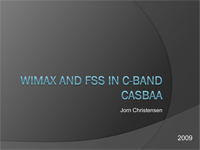 |
Given at a workshop of the Asia-Pacific Broadcasting Union (ABU) in Kuala Lumpur on July 27, 2009: “ABU PREPARATORY SEMINAR ON WRC-11″Download presentation
Source: CASBAA, 27 July, 2009 |
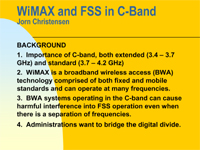 |
Given by Jorn Christensen, President, J Christensen Consultants during CASBAA India Satellite Industry Forum 2009.Download presentation Download handoutSource: CASBAA, 17 March, 2009 |
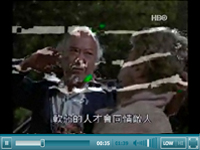 |
Satellite Breakfast Special: Much more than a backboneGiven by Bob Zitter, EVP & CTO, HBO during CASBAA Convention 2008. Please click here for Interference Demo or Presentation Script.
Source: CASBAA, 29 October, 2008 |
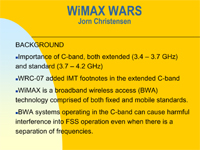 |
WiMAX WarsGiven by Jorn Christensen, President, J Christensen Consultants during CASBAA Singapore Satellite Industry Forum 2008.
Source: CASBAA, 16 June, 2008 |
 |
Terrestrial threats to Fixed-Satellite Services in the C-Band (0.2MB)Given by David Ball, Chairman of CASBAA Satellite Industry Committee during CASBAA GVF conference on “Meeting the Satellite Capacity Challenge” in New Delhi.
Source: CASBAA, 19 March 2007 |
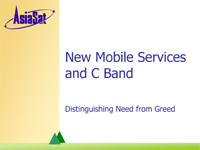 |
New Mobile Services and C-Band – Can We Survive? (5.8.MB)Given by Barry Turner, GM Engineering, AsiaSat during CASBAA Satellite Industry Forum 2007 in Singapore.
Source: AsiaSat, 18 June 2007 |
| Papers |
| “In-Home” use of C-band not a practical solution, CASBAA tells Singapore.Singapore’s IDA had asked in a public consultation if C-band frequencies should be allocated purely for indoor use. Citing ITU reports and other studies, CASBAA took the position that such use would still create unacceptable interference with satellite signals. Besides said CASBAA, who was going to watch and make sure such devices stayed indoors? Download CASBAA’s submission here.
Source: CASBAA, May 2014 |
| Mobile Industry’s Demand Methodology ChallengedSatellite industry advocates filed with the ITU a detailed objection to plans for assessing likely mobile demand. The proposed methodology produces wildly inaccurate results in many cases, the paper said. “It appears that there are significant inconsistencies in the parameters that have been assumed to build the estimates of the mobile traffic which form a key input of the spectrum requirements calculations. Replacing the traffic assumptions with more realistic values would lead to a significant reduction in the total spectrum requirements,” said the paper. Download the paper here.
Source: ITU, Mar 2014 |
| 3.3 – 3.4 GHz band for BWA“The ITU Radio Regulations make provision for use of the 3.3-3.4 GHz band for broadband wireless and IMT applications. A number of Asian countries have applied this clause and allocated this band for IMT, with considerable success. Some countries, including China, are proposing this band as a suitable frequency range for WRC-15 agenda 1.1. It may be worth considering supporting this allocation.”
Download here. Source: Asiasat, November 2013 |
| Join Our Efforts to Safeguard C-band Spectrum! Asian broadcasting and satellite organizations have united to appeal for attention and support by companies in Asia’s many countries and regions for efforts to safeguard the satellite C-band frequencies which are the lifeblood of broadcast distribution in our region. These Associations have issued a joint appeal, which we attach, and urge all CASBAA members to consider and implement. Download the appeal, here.
Source: CASBAA, Mar 2013 |
| Asian Satellite Reps Describe C-band Interference ChallengeCASBAA’s consultant Jorn Christensen and experts from member company Asiasat united to deliver a scientific paper and presentation to the prestigious IEEE Globecom 2012 conference in Anaheim, CA, USA on December 6, 2012. Christensen told the 2,000 assembled delegates from the global electronics and communications industries that interference into satellite reception from terrestrial broadband wireless systems is a real and growing problem in many countries. The likelihood is for the situation to get worse, he said, and the ITU is debating opening up the C-band for broader use, with potentially disastrous consequences. Download the presentation above, and the scientific paper here.
Source: CASBAA, Dec 2012 |
| CASBAA Urges Australia To Avoid C-band for Mobile Broadband; Warns of International RepercussionsIn a submission to the Australian Communications and Media Authority (ACMA), CASBAA pointed out that decisions by national regulatory bodies can have serious repercussions for the commercial viability of international services. This is especially true of frequency allocations affecting international satellite services, and CASBAA expressed “deep concern” at ACMA consideration of licensing standard C-band frequencies for mobile broadband services. CASBAA’s bottom line: “We urge ACMA not to further consider using these frequencies for mobile broadband services, as to do so will contribute to jeopardizing essential C-band communication services across a wide swathe of Australia’s neighbouring countries.” Download the document here.
Source: CASBAA, June 2011 |
| On Guard Against Interference by Wireless SystemsA representative of the Asian satellite industry told a recent ITU preparatory meeting that from the point of view of interference with satellite services, “fixed” wireless services are the same as “mobile” ones. (While the transmitter is fixed, the receivers can be located anywhere within the service area, and potentially cause interference with satellite reception.) To guard against interference, satellite operators should ensure their receiving dishes are registered with government spectrum agencies, and when a wireless operator seeks new licenses in satellite frequency bands, “point out to the administration that a Fixed Wireless Network is not a fixed service as defined in the ITU Radio Regulations, but that the interference potential of a FWA transmit/receive network is the same as for a mobile network.” And the satellite industry should support proposals to WRC-12 under Agenda item 1.2 to require land point-to-area transmit/receive applications to be notified as mobile services. See the ITU document here.
Source: CASBAA, February 2010 |
| the Other Side of the WiMax Wars: LTE versus WiMAX In comparing LTE (Long Term Evolution) versus WiMAX it is necessary to be more specific. LTE is a mobile technology and WiMAX has standards for both mobile and fixed networks. Therefore, a meaningful comparison should be between LTE and mobile WiMAX. To read the full document click here.Source: CASBAA, February 2010 |
| ITU Reports Underline incompatibility of wireless and satellite services in the C-band The C-band invasion by wireless services is not going away, and CASBAA broadcaster and satellite operator members will need to keep in touch with their regulatory authorities to urge continued protection for the C-band. Recent documents published by the International Telecommunications Union’s Study Group 4 (SG4) underline the practical impossibility of coexistence in the C-band for broadband wireless services (such as WiMAX) and satellite telecommunications. This ITU group has a Working Party whose preliminary draft new report entitled “Studies on compatibility of broadband wireless access (BWA) networks and fixed-satellite service (FSS) networks in the 3 400-4 200 MHz band” has been summarized for CASBAA members here.Source: CASBAA, February 2010 |
| Real-life field study of the effect of a WiMAX system in an urban area
A field study in Amsterdam demonstrated the effect on satellite services of an operational urban WiMAX system. The conclusions are that “An operational WiMAX system in an urban environment will not allow for any acceptable satellite reception at an observed distance of 34 km,” and “(the system) caused a raised noise floor at a distance of 44 km which would be in excess of the long-term protection criterion.” Source: ITU, April |
| APT Report on BWA-FSS Coexistence (1 MB) The Asia-Pacific Telecommunity (APT) report on the Co-existence of broadband wireless access networks in the 3400-3800 MHz band and fixed satellite service networks in the 3400-4200 MHz band.Source: APT, March 2008 |
| Position Paper – Interference in C-Band by Terrestrial Wireless Applications to Satellite Applications (0.1MB) National administrations should recognize the potential for massive disruptions to C-band satellite communications, radar systems and domestic microwave links, if spectrum is inappropriately allocated to, and frequencies inappropriately assigned for, terrestrial wireless applications in the Cband (specifically 3.4 – 4.2 GHz)Source: CASBAA, February 2007 |
| Press Articles |
| Asia-Pacific Broadcasting article
Asia-Pacific Broadcasting Magazine reported on the CASBAA-led joint appeal for broadcaster support by organizations of the Asian television industry. In an editorial, APB supported the appeal, saying “…broadcasters in the region should quickly make concerted efforts to lobby their national media authorities…not to succumb to pressure by the IMT crowd at WRC-2015.” Source: APB, Mar 2013 |
| Cable Operators Urge Authorities to Solve Bandwidth Problems The Dhaka “Financial Express” newspaper published a good summary of the problems faced by Bangladeshi TV operators due to extensive interference from wireless broadband systems that have been licensed in the C-band frequencies. Quoted the newspaper, “If the problem continues, millions of viewers will be deprived of services from cable operators of the satellite television channels, the operators said.”Source: “Financial Express”, Dhaka, May 26 2012 |
| Bangladesh Press Release A joint media release by CASBAA and the Global V-Sat Forum (GVF) reported the results of a seminar attended by Dhaka regulators to hear complaints by the Bangladesh TV industry about WiMax interference.Source: CASBAA, May 18, 2012 |

